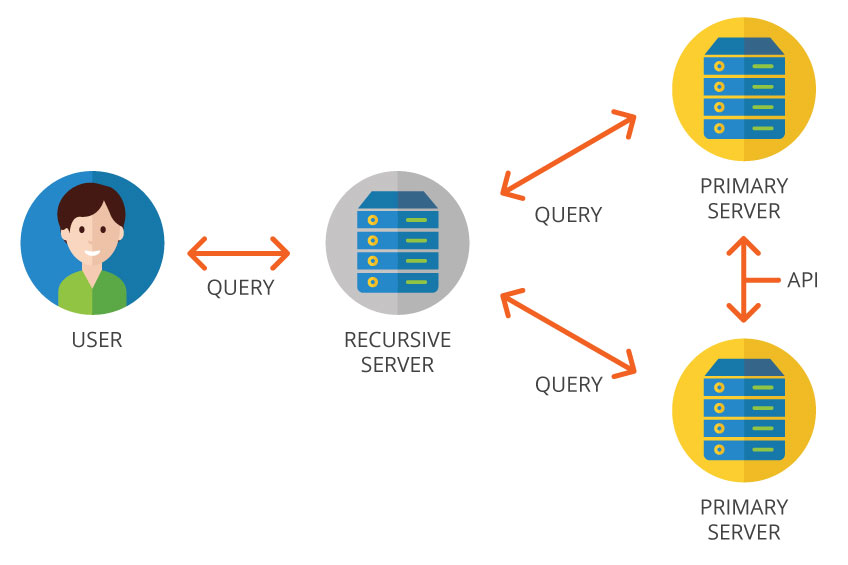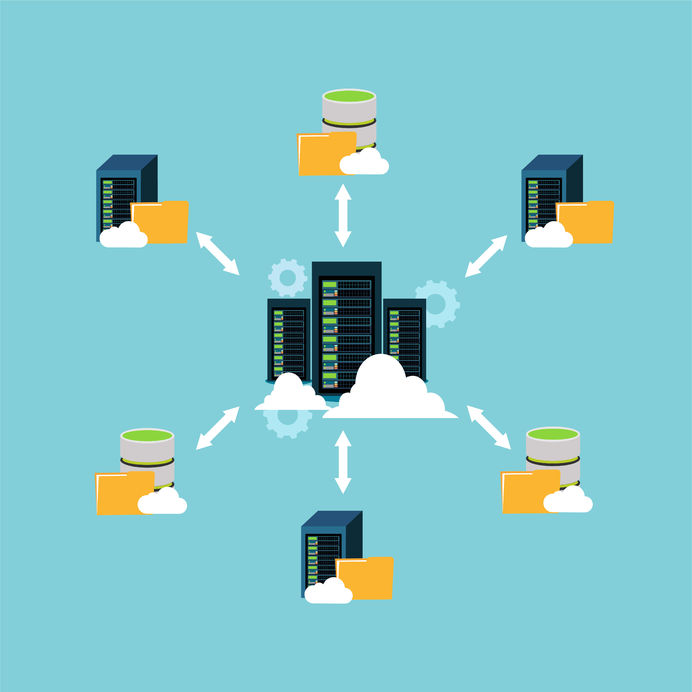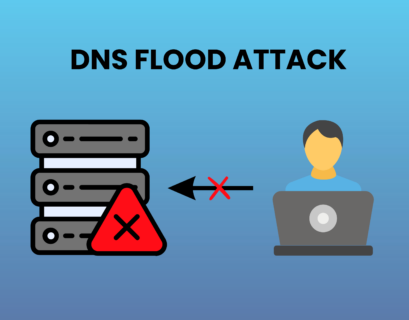Having a Secondary DNS server is crucial for website owners who want to ensure uptime and minimize downtime, as it provides extra resilience to the system and reduces unwanted outages. In this blog post, we will dive into the topic and explain what it is, how it works, and why it’s important. So, keep reading to learn everything you need about Secondary DNS servers.
Table of Contents
Secondary DNS server explained
A Secondary DNS server is a backup server that takes over the responsibilities of the Primary DNS server in case of a failure or overload.
The backup DNS server contains the same DNS information as the Primary server, ensuring that visitors can still access your website. When a user requests a domain name, the Secondary DNS server responds with the correct IP address, just like the Primary server.
Why is a Secondary DNS server important?
Having a backup DNS server is crucial for website owners who want to ensure uptime and minimize downtime. Without a backup server, if your Primary server fails, visitors won’t be able to access your website until the issue is resolved. This could lead to a loss of revenue and reputation, especially if your website is critical to your business operations.
Moreover, having a Secondary DNS server can also help distribute the load on your Primary server. Some of the incoming traffic can be directed to the backup server, reducing the load on the Primary server and ensuring a faster response time for visitors.
Ready for ultra-fast DNS service? Click to register and see the difference!Experience Industry-Leading DNS Speed with ClouDNS!
How does it work?
A Secondary DNS server duplicates the DNS records of the Primary server. When a DNS query is sent, it is first sent to the Primary DNS server. Then, if the Primary server is available, it responds as usual with the requested DNS record. Yet, if it is unavailable for some reason, the DNS query is sent to the backup DNS server.
The Secondary server is configured to respond to DNS queries when the Primary server is unavailable. For that reason, it is constantly synchronized with the Primary server, meaning it automatically updates its DNS records every time the Primary server makes changes. That ensures that the backup server always has the most up-to-date DNS records.
Setting up a backup server involves configuring the Primary server to notify the backup server of any changes made to the DNS records. That is possible thanks to Zone transfer, which allows the backup server to receive updates from the Primary server.
When a Zone transfer occurs, the Primary server sends the updated DNS records to the backup server, which then updates its own DNS database with the new information. This ensures that the Secondary server always has an updated copy of the DNS data, ready to respond to incoming DNS queries.
Difference between Primary and Secondary DNS server
The main difference is hidden in the hierarchy. The Primary is the main one, and the Secondary gets the DNS records from the Primary. Let’s explain a little more about the differences between the Primary DNS server and the Secondary DNS server:
- A Primary DNS server is the authoritative server for a particular domain. It is responsible for storing and maintaining the zone file containing all the available DNS records for that precise domain name.
- A Secondary DNS server, on the other hand, is a backup server that obtains a copy of the zone file from the Primary DNS server. It is designed to provide redundancy and improve the reliability of the DNS system. If the Primary DNS server becomes unavailable, the Secondary DNS server can take over and continue serving DNS requests.
Different configurations
There are several different Primary and Secondary DNS server configurations. We will take a closer look and explain the three most common.
Primary – Secondary
In this configuration, the current DNS server serves as a Primary DNS. All the updates of records are done to it.
The Primary DNS notifies the Secondary for changes, and then the zones are transferred through IXFR or AXFR. The Secondary DNS server serves as a backup and also reduces the load, part of the traffic goes to the Secondary. 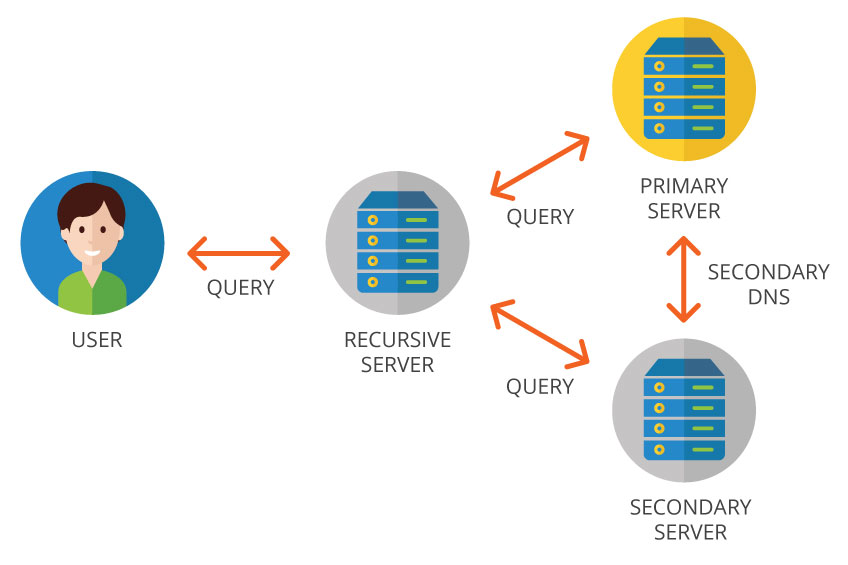
Hidden Primary
In the current configuration, there is a DNS server behind the firewall of your company, but you would like to keep it this way. This DNS server is the primary, and you want to have it as safe as possible, and unknown for the users. The Secondary DNS server will be the one that will show your face to the world, receiving all the updates from the primary. This won’t reduce the load but is an excellent safety plan for your valuable information.
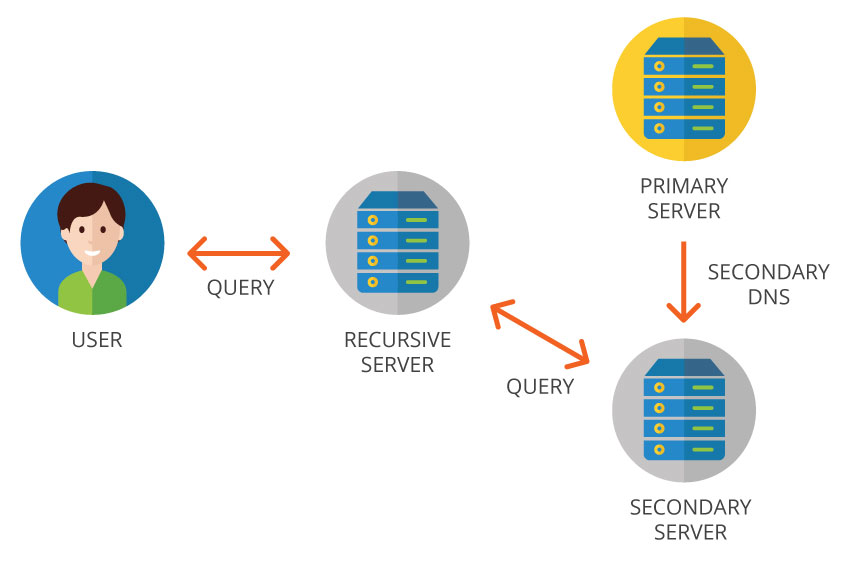
Primary – Primary
Here we have an entirely different configuration. The two DNS servers are primary. Both of them can answer to incoming DNS queries and that way they can reduce the load and act faster. The user will have the benefit of increasing speed and always having up to date data. The synchronization is made with an API in the middle between the two and keep them both updated.
No matter which configuration you choose, a Secondary DNS server can definitely benefit you. It can add extra security, better distribution of the traffic and faster results for your users. And most importantly, it is easy to set up. Even if you are using another DNS provider, you can use a Secondary DNS from ClouDNS. This way you can enjoy all the benefits and feel more relaxed about your data.
Benefits of Secondary DNS server
Here are some of the main benefits and compelling reasons why to use a backup server:
- Less downtime: It adds extra resilience to the system. It reduces unwanted outages. Even if your Primary DNS is down (due to failure, DDoS attacks, or just maintenance), the Secondary will still be running, and your users won’t be disappointed. The traffic will be managed by your Secondary DNS.
- Improved performance: You can improve the performance of the system as a whole if you distribute a part of the traffic to your Secondary DNS. This will benefit your clients, and it will result in quicker loading times for them.
- Backup plan: You can use it as a backup plan and have a copy of all the data there. Be safe. Add this extra layer of security to your system.
- Load Balancing: By distributing DNS queries across multiple servers, you can implement load balancing techniques to evenly distribute traffic and ensure optimal performance and reliability.
- Geographical Redundancy: Placing Secondary DNS servers in different geographical locations can improve the resilience of your DNS infrastructure against localized outages or network issues.
Who Needs Secondary DNS Servers?
Secondary DNS servers are essential for every company with an online presence to generate revenue or for organizations handling critical operations. They serve as backups and guarantee constant functionality in case of primary server failure or malfunction. That way, all purchases and work can proceed as normal despite an outage. Some entities that need them are:
- Businesses and Organizations: Businesses rely heavily on their online presence for various operations. A backup server ensures their website and other online services remain accessible even if the primary server fails.
- E-commerce Platforms: E-commerce platforms need high availability to process transactions and serve customers effectively.
- Internet Service Providers (ISPs): ISPs often use Secondary DNS servers to ensure uninterrupted internet service for their subscribers.
- Critical Infrastructure Providers: Entities operating critical infrastructure, such as utilities, healthcare facilities, and financial institutions, rely on Secondary DNS servers to ensure uninterrupted service delivery.
- Web Hosting Providers: Web hosting companies host thousands of websites on their servers. They typically offer Secondary DNS services to their clients to ensure the high availability of their websites.
- Government Agencies: Government agencies also require high availability of their online services. They use backup servers to ensure continuous accessibility to their websites, portals, and other online resources, even during emergencies or technical failures.
Best Practices for Managing a Secondary DNS Server
Proper management of a Secondary DNS server ensures high availability, reliability, and optimal performance for your domain. Here are some best practices to help you keep your DNS infrastructure secure and efficient:
- Secure Zone Transfers: Always configure zone transfers (AXFR/IXFR) to be allowed only from authorized IP addresses. Use TSIG (Transaction Signature) keys to authenticate and encrypt transfers, preventing unauthorized access.
- Monitor Performance and Uptime: Regularly check the health of both your Primary and Secondary DNS servers. Use DNS monitoring tools to detect failures early. Additionally, Dig and NSlookup can help you verify that DNS records are syncing correctly.
- Ensure Regular Synchronization: Set up automatic zone transfers to keep your Secondary DNS updated with the latest changes from the Primary. Configure the SOA (Start of Authority) refresh rate to avoid delays in record updates.
- Distribute Servers Across Different Locations: Place your Secondary DNS servers in different geographic regions to protect against localized outages That way, you ensure better redundancy and improve DNS resolution speed and performance.
- Update NS Records: Make sure your domain registrar’s Name Server (NS) records include the Secondary DNS servers, ensuring proper redundancy and failover.
- Use Multiple DNS Providers: If possible, use different DNS providers for added resilience against provider-specific outages.
By following these best practices, you can enhance reliability, improve security, and reduce downtime risks for your domain’s DNS infrastructure.
Conclusion
Having a Secondary DNS server is essential for website owners who want to ensure uptime, minimize downtime, and improve the reliability of their DNS system. It serves as a backup plan that takes over the responsibilities of the Primary server in case of failure or overload, ensuring visitors can still access your website. In addition, by distributing the traffic to the backup server, you can improve the performance of the system as a whole and enjoy quicker loading times for your users. Overall, a Secondary DNS server is a smart and easy-to-set-up solution that can benefit any website owner.
30-day Free Trial for Secondary DNS

